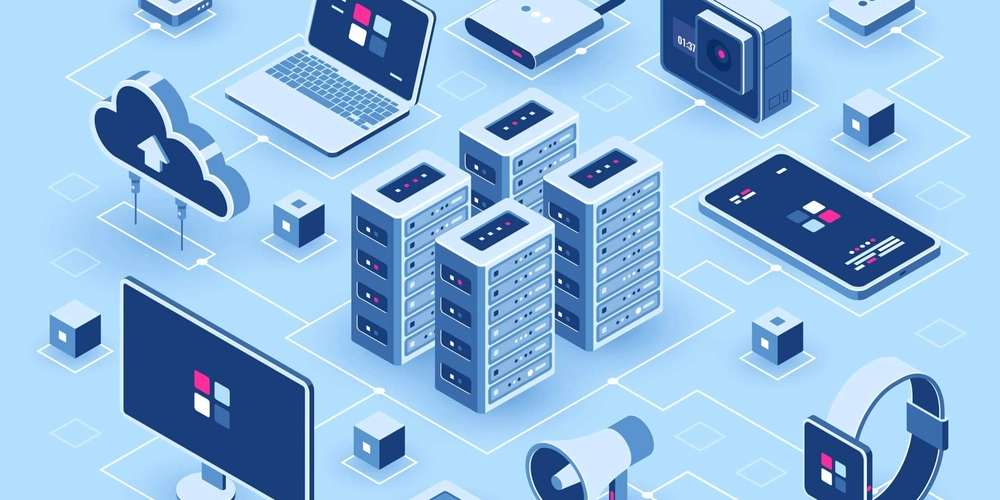Machine Learning Demystified: A Practical Introduction Through a Simple Project
Ever hear the term "Machine Learning" and feel a little wave of intimidation? The term "Machine Learning" often surfaces in discussions about technology, and it can sometimes seem daunting. For the longest time, "ML" felt like this exclusive club I wasn't qualified for, something reserved for data science wizards. I was curious, definitely, but also convinced it was way beyond my reach as someone still learning the ropes of programming. But what if I told you that you can build and run a simple machine learning model in less than 20 lines of actual learning code? I just did it, and it completely changed how I see machine learning. Stick with me, and I'll show you exactly how. So, What Is Machine Learning, Really? Let's ditch the jargon for a second. At its core, machine learning is surprisingly simple to understand: _ Machine learning is just teaching a computer how to find patterns in data and make predictions based on those patterns — without explicitly programming every single rule. _ Think about how you learn. If you see enough pictures of cats, you start recognizing features (pointy ears, whiskers, fur) and can identify a cat you've never seen before. You weren't given a giant rulebook; you learned from examples. Machine learning models do something similar, but with data. From Simple Models to Large Language Models You might be wondering — "Okay, predicting scores is cool... but what does this have to do with ChatGPT or other AI tools?" The answer? Everything. At its core, machine learning is about learning patterns from data. Whether it’s a small model learning how hours studied relates to scores, or a massive model like ChatGPT learning how words relate in a sentence, the principle is the same. A large language model like ChatGPT learns how words relate to each other by analyzing billions of sentences.An LLM uses complex deep learning techniques (like transformers) to understand language and generate responses. My Mini Project: Predicting Student Scores To dip my toes into the ML waters, I decided on a simple, relatable goal: Predicting a student's final exam score based on their study habits. Specifically, I wanted to see if we could guess the score based on: How many hours they studied (Hours_Studied) How many practice tests they completed (Practice_Tests) I started with a small, imaginary dataset. Imagine we collected this info from 10 students: Walking Through the Code : Okay, here's the code I used. I'll break down what each part does in plain English. 1. Imports I imported pandas to handle our data easily (like a super-powered spreadsheet), and scikit-learn (often called sklearn) which is like a magic toolbox full of ready-made machine learning algorithms (LinearRegression) and helpers (train_test_split). 2. Sample Data I then created a sample dataset 3. Selecting features and targets The lines of code above tell the computer: "Look at Hours_Studied and Practice_Tests (the features, X) to figure out the pattern that leads to the Final_Score (the target, y)." 4. Splitting the data into training and testing This is crucial! I hide some data (20% in this case, the X_test, y_test) from the model while it's learning. Then, I use this hidden data to check if the model actually learned the pattern or just memorized the training answers. Think of it like studying with one set of practice questions (training) and then taking a mock exam with different questions (testing). 5. Training the model I chose a simple model called Linear Regression. The model.fit(X_train, y_train) line is where the computer looks at the training data and figures out that relationship. This is the core "learning" step! 6. Predicting The predict function asks the trained model: "Based on what you learned, what score would you predict for someone who studied 3.5 hours and took 2 practice tests?" Visualizing the Pattern Sometimes, a picture is worth a thousand lines of code. We can plot how study hours relate to the final score, and even draw the line our LinearRegression model figured out: This plot shows each student as a dot. The orange line is the trend our machine learning model found – generally, as study hours increase, the final score tends to increase too. The model learned this relationship from the data! The "Aha!" Moment When I ran this code and saw it predict a score, I had a moment of realization: _ "Wait... this is machine learning? That's it?" _ Okay, obviously, ML can get vastly more complex than this. But the fundamental process – feeding data to an algorithm, letting it find patterns, and using it to make predictions – was right there in just a few lines of code. You Can Do This Too! Go Demystify ML For Yourself. If you've been curious about machine learning but felt it was too complex, I hope this little walkthrough helps

Ever hear the term "Machine Learning" and feel a little wave of intimidation? The term "Machine Learning" often surfaces in discussions about technology, and it can sometimes seem daunting. For the longest time, "ML" felt like this exclusive club I wasn't qualified for, something reserved for data science wizards.
I was curious, definitely, but also convinced it was way beyond my reach as someone still learning the ropes of programming.
But what if I told you that you can build and run a simple machine learning model in less than 20 lines of actual learning code? I just did it, and it completely changed how I see machine learning. Stick with me, and I'll show you exactly how.
So, What Is Machine Learning, Really?
Let's ditch the jargon for a second. At its core, machine learning is surprisingly simple to understand:
_
Machine learning is just teaching a computer how to find patterns in data and make predictions based on those patterns — without explicitly programming every single rule.
_
Think about how you learn. If you see enough pictures of cats, you start recognizing features (pointy ears, whiskers, fur) and can identify a cat you've never seen before. You weren't given a giant rulebook; you learned from examples. Machine learning models do something similar, but with data.
From Simple Models to Large Language Models
You might be wondering — "Okay, predicting scores is cool... but what does this have to do with ChatGPT or other AI tools?"
The answer? Everything.
At its core, machine learning is about learning patterns from data. Whether it’s a small model learning how hours studied relates to scores, or a massive model like ChatGPT learning how words relate in a sentence, the principle is the same.
A large language model like ChatGPT learns how words relate to each other by analyzing billions of sentences.An LLM uses complex deep learning techniques (like transformers) to understand language and generate responses.
My Mini Project: Predicting Student Scores
To dip my toes into the ML waters, I decided on a simple, relatable goal: Predicting a student's final exam score based on their study habits. Specifically, I wanted to see if we could guess the score based on:
- How many hours they studied (Hours_Studied)
- How many practice tests they completed (Practice_Tests)
I started with a small, imaginary dataset. Imagine we collected this info from 10 students:
Walking Through the Code :
Okay, here's the code I used. I'll break down what each part does in plain English.
1. Imports
I imported pandas to handle our data easily (like a super-powered spreadsheet), and scikit-learn (often called sklearn) which is like a magic toolbox full of ready-made machine learning algorithms (LinearRegression) and helpers (train_test_split).
2. Sample Data

I then created a sample dataset
3. Selecting features and targets

The lines of code above tell the computer: "Look at Hours_Studied and Practice_Tests (the features, X) to figure out the pattern that leads to the Final_Score (the target, y)."
4. Splitting the data into training and testing
![]()
This is crucial! I hide some data (20% in this case, the X_test, y_test) from the model while it's learning. Then, I use this hidden data to check if the model actually learned the pattern or just memorized the training answers. Think of it like studying with one set of practice questions (training) and then taking a mock exam with different questions (testing).
5. Training the model

I chose a simple model called Linear Regression. The model.fit(X_train, y_train) line is where the computer looks at the training data and figures out that relationship. This is the core "learning" step!
6. Predicting
The predict function asks the trained model: "Based on what you learned, what score would you predict for someone who studied 3.5 hours and took 2 practice tests?"
Visualizing the Pattern
Sometimes, a picture is worth a thousand lines of code. We can plot how study hours relate to the final score, and even draw the line our LinearRegression model figured out:

This plot shows each student as a dot. The orange line is the trend our machine learning model found – generally, as study hours increase, the final score tends to increase too. The model learned this relationship from the data!
The "Aha!" Moment
When I ran this code and saw it predict a score, I had a moment of realization: _
"Wait... this is machine learning? That's it?"
_
Okay, obviously, ML can get vastly more complex than this. But the fundamental process – feeding data to an algorithm, letting it find patterns, and using it to make predictions – was right there in just a few lines of code.
You Can Do This Too! Go Demystify ML For Yourself.
If you've been curious about machine learning but felt it was too complex, I hope this little walkthrough helps. It really is possible to get started with simple projects.
Why not try it yourself?
- Find a simple dataset online (like house sizes and prices, or daily temperature and ice cream sales) and try to build a predictor for it.
- Think about simple patterns in your own life: Could you predict workout calories burned based on duration? Crop yield based on rainfall?
Machine learning is a powerful field, but it doesn't have to be scary. It starts with understanding the basics, and sometimes the best way to do that is to just build something, however small.
Go ahead, take that first step! You might be surprised at what you can do.
Bonus: Here is my link to the full code.
Let me know any challanges you faced in the comments below




























![[Webinar] AI Is Already Inside Your SaaS Stack — Learn How to Prevent the Next Silent Breach](https://blogger.googleusercontent.com/img/b/R29vZ2xl/AVvXsEiOWn65wd33dg2uO99NrtKbpYLfcepwOLidQDMls0HXKlA91k6HURluRA4WXgJRAZldEe1VReMQZyyYt1PgnoAn5JPpILsWlXIzmrBSs_TBoyPwO7hZrWouBg2-O3mdeoeSGY-l9_bsZB7vbpKjTSvG93zNytjxgTaMPqo9iq9Z5pGa05CJOs9uXpwHFT4/s1600/ai-cyber.jpg?#)














































































































































![[The AI Show Episode 144]: ChatGPT’s New Memory, Shopify CEO’s Leaked “AI First” Memo, Google Cloud Next Releases, o3 and o4-mini Coming Soon & Llama 4’s Rocky Launch](https://www.marketingaiinstitute.com/hubfs/ep%20144%20cover.png)




































































































































































































![Rogue Company Elite tier list of best characters [April 2025]](https://media.pocketgamer.com/artwork/na-33136-1657102075/rogue-company-ios-android-tier-cover.jpg?#)








































































_Andreas_Prott_Alamy.jpg?width=1280&auto=webp&quality=80&disable=upscale#)




























































































![What’s new in Android’s April 2025 Google System Updates [U: 4/18]](https://i0.wp.com/9to5google.com/wp-content/uploads/sites/4/2025/01/google-play-services-3.jpg?resize=1200%2C628&quality=82&strip=all&ssl=1)










![Apple Watch Series 10 Back On Sale for $299! [Lowest Price Ever]](https://www.iclarified.com/images/news/96657/96657/96657-640.jpg)
![EU Postpones Apple App Store Fines Amid Tariff Negotiations [Report]](https://www.iclarified.com/images/news/97068/97068/97068-640.jpg)
![Apple Slips to Fifth in China's Smartphone Market with 9% Decline [Report]](https://www.iclarified.com/images/news/97065/97065/97065-640.jpg)






































































































































